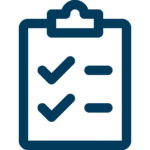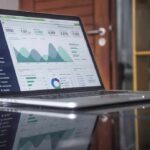Small businesses must stay ahead of the curve by effectively identifying and filling market gaps. One way to achieve this is through the strategic use of Artificial Intelligence (AI). AI’s ability to analyze vast amounts of data and detect patterns beyond human capability makes it an invaluable tool for uncovering untapped market niches, missing content, and unmet customer needs. Drawing inspiration from industry thought leaders like Andy Crestodina, Co-Founder of Orbit Media Studios, this post delves into how small businesses can leverage AI to identify these gaps, why AI outperforms humans in this regard, and provides practical prompts to guide small businesses in their AI-driven market research efforts.
Why AI Excels at Spotting Gaps
AI’s superior ability to identify market gaps stems from several unique strengths that surpass human capabilities. These strengths include data processing speed and scale, advanced pattern recognition, unbiased analysis, and continuous learning capabilities. Let’s delve deeper into each one of these aspects to understand why AI is a powerful tool for discovering untapped opportunities and unmet needs in the market.
Data Processing Speed and Scale
Human Limitation: Humans can analyze data, but their capacity is limited by time and cognitive resources. The sheer volume of data generated daily across various platforms, including social media, customer feedback forms, sales records, and market trends, is overwhelming for manual analysis. 2.5 quintillion bytes (2.5 ^ 18), according to CiRadar.
AI Advantage: AI can process and analyze vast amounts of data at unprecedented speeds. Machine learning algorithms can scan through terabytes of data in seconds, extracting meaningful insights and patterns that would take humans months or even years to uncover. This rapid data processing enables businesses to react swiftly to emerging trends and market demands, maintaining a competitive edge.
Example: A retail company can use AI to analyze customer purchase data from thousands of stores worldwide, identifying trends in customer preferences and purchasing behaviors in real-time. This allows the company to adjust inventory, marketing strategies, and product offerings almost instantaneously.
Advanced Pattern Recognition
Human Limitation: While humans are good at recognizing patterns, their ability to detect subtle or complex patterns diminishes as the data set grows in size and complexity. Cognitive biases and preconceived notions can further obscure accurate pattern recognition.
AI Advantage: AI excels at recognizing intricate and hidden patterns within large data sets. Machine learning models, especially deep learning networks, are designed to identify relationships and correlations that are not immediately apparent. These models can analyze diverse data types, including text, images, and numerical data, to uncover multi-dimensional patterns.
Example: In the healthcare industry, AI can analyze patient records, genetic data, and lifestyle information to identify patterns that may indicate a predisposition to certain diseases. This allows for early intervention and personalized treatment plans, improving patient outcomes.
Unbiased Analysis
Human Limitation: Human decision-making is often influenced by cognitive biases, such as confirmation bias, anchoring, and availability heuristic. These biases can lead to skewed analysis and sub-optimal decision-making.
AI Advantage: AI systems, when properly designed and trained, can provide objective and unbiased analysis. They base their findings purely on data without the influence of emotions, personal experiences, or biases, leading to more accurate and reliable insights.
Example: In hiring processes, AI can analyze resumes and candidate data to identify the best candidates based on their skills and experience without being influenced by biases related to gender, ethnicity, or background. This ensures a fairer and more effective recruitment process.
Continuous Learning
Human Limitation: Humans can learn and adapt, but their capacity for continuous learning is limited by factors such as fatigue, the ability to absorb new information, and the need for ongoing education and training.
AI Advantage: AI systems, particularly those using machine learning, are designed to learn continuously from new data. As they are exposed to more information, their models improve in accuracy and predictive power. This continuous learning enables AI to adapt dynamically to changing market conditions and emerging trends.
Example: In the financial sector, AI-powered trading algorithms can learn from market data in real-time, continuously updating their strategies to optimize trades and maximize returns. This adaptability allows them to perform well even in volatile market conditions.
Examples of How AI Can Identify Market Gaps
To make AI identify market gaps you must first populate its memory with your information. The following prompt is what I use with my clients. Additionally, since it is always advisable to verify the results, I make sure to ask it for its sources.
Master Prompt:
The following is some information about my business:
- NAICS Code:
- Business Name:
- Website:
- Size:
- Location:
- Unique Selling Proposition:
- For verification purposes, I require a link at the end of any datum or claim in ChatGPT’s responses. Do you understand?
Market Research and Competitive Analysis
AI can aggregate and analyze data from various sources, such as competitor websites, market reports, and customer feedback. AI can sift through huge amounts of market data to identify underserved niches. By analyzing competitor strategies, customer reviews, and market trends, AI can highlight areas where demand exceeds supply.
Prompt: Conduct detailed demographics and psychographic research for the target market. Identify key demographic characteristics relevant to the industry, such as age, gender, income, education, and geographic location. Please also provide a detailed overview of the primary customer segments in the specific industry, including demographics and purchasing behavior.
Prompt: What are the latest customer trends and preferences in the specific industry? Analyze psychographic factors, including lifestyle, purchasing behaviors, values, and pain points related to the business concept.
Prompt: What are the most effective marketing channels for businesses in the specific industry? How do businesses in the specific industry effectively use social media, content marketing, and email marketing?
Prompt: Summarize all the previous findings and provide insights on how these factors influence the purchasing decision for the product/service.
Prompt: Provide an overview of the industry and relevant financial metrics. Detail the size and growth trends of the industry. Highlight key financial metrics such as average revenue, profit margins, and operational costs within the industry. Include information on market leaders and emerging players in the industry.
Prompt: Please research and compile a detailed analysis of the top five competitors in my industry, considering the size and location of my business. Include links to their websites, the city and state where they are located, and list each competitor’s offerings, their revenue, if available, and the number of employees. Compile a detailed analysis of the Google and Yelp reviews for my top five competitors during the past three years and include their average star rating, if available. Provide a detailed comparison of their pricing strategies. Additionally, describe each competitor’s business model and suggest strategies to give my business a competitive advantage.
Prompt: Please carry out a thorough review of the web pages for each of my five competitors. For each, provide a link to their website and analyze various elements, including the site’s design and usability, call to action, image-to-text ratio, content quality, SEO practices, relevant keywords, and overall user experience.
Prompt: What gaps exist that the competition is not satisfying and could be a competitive advantage for my firm?
Content Gap Analysis
AI tools can scan existing content on the web, identifying under-represented or poorly covered topics. This helps businesses create valuable content that addresses the needs and interests of their target audience, improving engagement and search engine rankings.
Prompt: What are the most important topics that are the least likely to be covered by the big players in my industry?
Prompt: Tell me some provocative but mundane, almost trivial topics that people in my industry feel very strongly about
Prompt: What questions are people in the industry afraid to answer?
Prompt: What false things do my customers believe to be true about my industry?
Prompt: What are the most important topics in the industry that are the least likely to be covered by my competitors?
Predictive Analytics
AI can forecast future trends based on historical data, helping businesses anticipate and prepare for market changes. This is particularly useful in industries with rapidly changing dynamics, such as technology and fashion.
Prompt: Please research and compile information about market trends, industry performance, growth outlook, and key industry players based on my size, local saturation levels, prevalent business models, and federal and state regulatory requirements relevant to my industry.
Prompt: Identify emerging trends over the past three years, including both national and regional developments, and discuss their potential impact on businesses within my industry.
Conclusion
In the modern business environment, staying ahead means continually adapting and evolving. By leveraging AI to identify market gaps, small businesses can uncover new opportunities, create more targeted content, and better meet customer needs. AI’s unparalleled data processing capabilities and objective analysis provide a significant advantage over traditional methods, making it an essential tool for any forward-thinking business. As we move further into the digital age, those who harness the power of AI will be best positioned to thrive in an increasingly competitive landscape.
How can you use AI to find content gaps?












